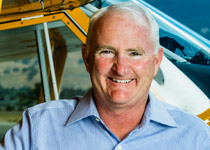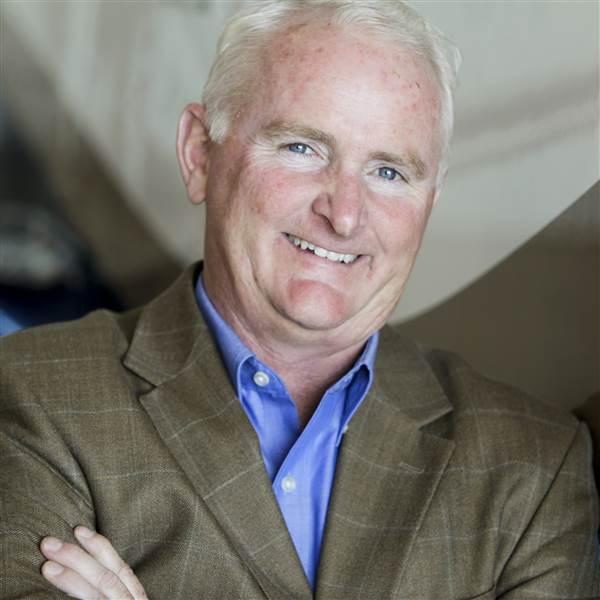President's Position: One step closer to reality
Moving toward a fuel-changed future
 We’ve been talking about the need to find an unleaded replacement for avgas since the United States began phasing out leaded fuels in the early 1970s. Back then we enjoyed economies of scale, as the military and even airlines were big consumers of avgas. Today, that’s no longer true, and demand has fallen while prices have gone up. But there’s much more to this issue than nostalgia for lower fuel prices, and recent developments in the hunt for an unleaded replacement fuel have brought it one big step closer to reality.
We’ve been talking about the need to find an unleaded replacement for avgas since the United States began phasing out leaded fuels in the early 1970s. Back then we enjoyed economies of scale, as the military and even airlines were big consumers of avgas. Today, that’s no longer true, and demand has fallen while prices have gone up. But there’s much more to this issue than nostalgia for lower fuel prices, and recent developments in the hunt for an unleaded replacement fuel have brought it one big step closer to reality.
On July 1, the FAA closed the window to submit candidate fuels for testing. That’s a major milestone because it means we’re moving swiftly from asking “Can it work?” to asking “How well does it work?” Nine fuels were submitted by five different groups from around the world, including Afton Chemical Company; Avgas LLC; Shell; Swift Fuels; and a consortium made up of BP, TOTAL, and Hjelmco (see “Briefing,” page 28).
Now the FAA will evaluate each proposal as part of its Piston Aviation Fuels Initiative, or PAFI. PAFI’s mission is to identify, select, and provide fleetwide certification for fuels determined to have the lowest impact on the general aviation fleet. Its evaluation process will focus on each fuel’s production and distribution infrastructure, toxicology, and cost of aircraft operations. The idea is to identify any showstoppers before the nitty gritty of lab testing begins. Initial testing of the most promising fuels would start in September. The fuels that show the most promise in lab testing will go on to full-scale testing in aircraft and engines—and the producers of those fuels each will need to provide 10,000 gallons for the task.
To those watching from the outside, this may appear to signal movement from “talking about it” to “doing something about it.” But the truth is that behind the scenes many people have been very busy doing something about the future of aviation fuel, including key members of our staff here at AOPA.
AOPA has been deeply involved in this process from the very beginning. We’ve had a seat at the table at every step along the way. These days we’re an important part of the PAFI steering group, which also includes the FAA, the American Petroleum Institute, EAA, GAMA, NATA, and NBAA. PAFI, in turn, grew out of earlier initiatives, including the GA Avgas Coalition and the FAA’s Unleaded Aviation Transition Aviation Rulemaking Committee.
AOPA’s role has been to advocate for the GA community. That means making sure everyone involved recognizes the needs of GA users and that the ultimate solution effectively addresses those needs. It also means making sure there’s an adequate supply of 100LL available while the search for a replacement continues.
Any replacement fuel must have a minimal impact on the existing fleet—in other words, it should work in your airplane with as few changes as possible. We’ve also stressed that safety and performance cannot be compromised by the move to a new fuel. And we’ve emphasized that how the fuel affects the cost to operate an aircraft is critically important, too.
I know some of you will balk at that last idea, especially when you look at your most recent avgas receipt. I wish I could promise that any replacement fuel would be less expensive than avgas because I know just how important the price of fuel is to our members. But the truth is that no matter how we look at it, the ultimate price of a replacement fuel depends on many factors that lie far beyond our control. So while we can’t dictate fuel prices, we can work with the FAA and industry to make sure that operating cost is a prominent part of the equation in the hunt for a replacement fuel.
Even though this has been in the works for many years, it’s still early days in some ways. There’s much more to be done before we have one or more viable replacement fuels, but we’ve taken some big steps down the road, and that’s worth celebrating. Momentum is building and we’re on our way to achieving the FAA’s goal of having one or more replacements for avgas by 2018. Congress is on board, too, providing $6 million to support this program for the 2014 fiscal year. And, both the U.S. House and Senate appropriations committees have proposed another $6 million in funding for 2015.
That’s great news for pilots and aircraft owners, and we’ve begun to hear from shops that are getting orders for new and remanufactured engines as owners gain confidence that we’ll have a viable replacement for 100LL relatively soon. The future, while never certain, looks bright.
Inevitably, there are many variables in a process as complex as this. But there’s one thing you can count on—AOPA will keep your needs front and center at every step along the way.
AOPA President Mark Baker flies regularly around the country for business and pleasure.
Email [email protected]



